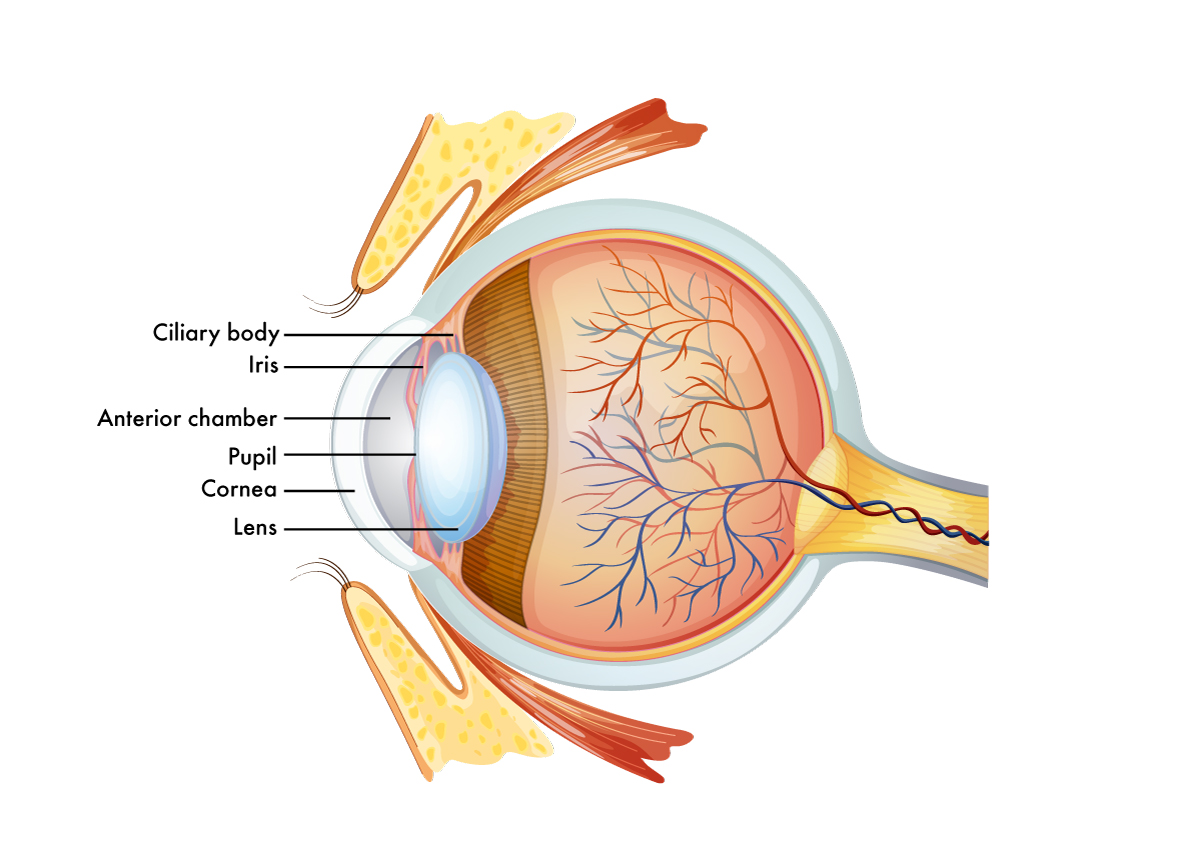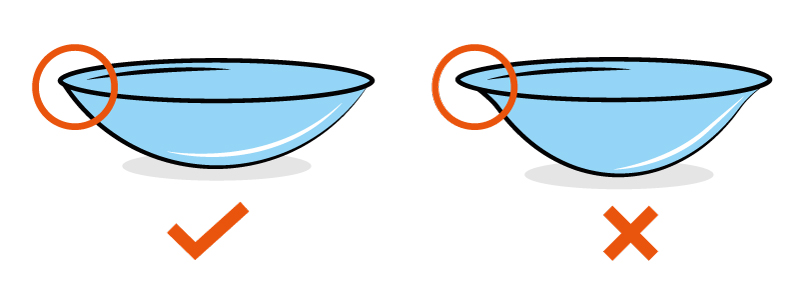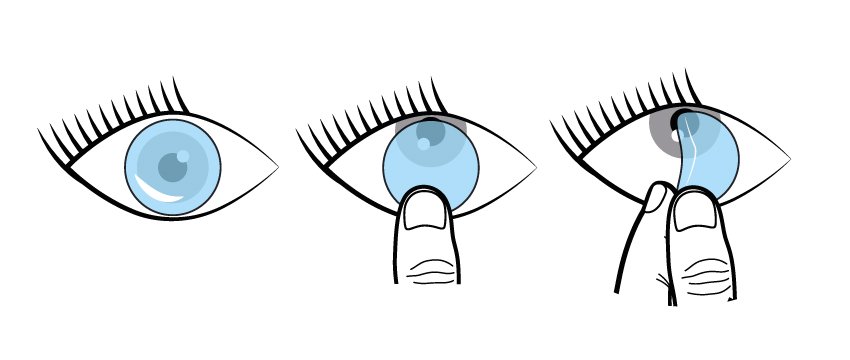For Parents
-
What is myopia?
Myopia is the medical term for nearsightedness. It is commonly known as the eye´s refractive state in which light comes to focus in front of the retina. In this condition, the eyeball is too long or too powerful, resulting in blurred far vision. Vision for close objects is clear within a certain range.
-
Why does myopia occur?
Hereditary factors often control the growth and development of the eye although environmental factors are highly associated with it.
-
Why do we need to manage myopia?
Generally, once you become myopic, it tends to worsen over time. Higher levels of myopia are associated with higher risks of eye diseases like glaucoma, retinal detachment, myopic macular degeneration and cataract later in life. All of these can drive to reduced vision, visual impairment or even blindness.
-
What causes myopia development and progression?
Genetics, individual characteristics and environment.
-
How will myopia affect my lifestyle?
Most individuals adapt well to wearing glasses or contact lenses. For those individuals who feel glasses affect their image or interfere with their activities, contact lenses, orthokeratology or refractive surgery may better meet their lifestyle and vision needs. Severely near-sighted individuals may find the condition limits their choice of occupations.
-
How can I slow my myopia progression?
Myopia management is the area of science dedicated to slowing down the progression of myopia in children and young adults. The following table is a compilation of the different systems and their effect rate.
Type of vision correction Effect on slowing myopic progression Normal glasses and standard contact lenses 0-5% Progressive/bifocal lenses 12-55% Soft contact lenses (multifocal and EDOF) 29-45% Orthokeratology 32-100% Atropine 30-77%, reducing to 30% after cessation depending on the concentration
-
Can progressive myopia start later, in adolescence or adulthood?
There is evidence to indicate that myopia can appear and/or progress in adolescence and young adulthood, especially in those exposed to intense academic environments. At this stage, it is not understood if the progression rate is different to that seen in children.
-
Is progressive myopia always ‘progressive’?
Evidence indicates that even high levels of myopia tend to stabilise in most eyes over a period. At this stage it is not clear as to when this endpoint for stabilisation may be for each individual.
-
When do you expect progressive myopia to stabilise?
We tend to think that myopia progression ends when people reach adult age, and this generally coincides with when people stop physically growing. That’s why traditionally we say myopia is more likely to progress until university age, but we are seeing myopia progress into the 30s for some people.
-
Can myopia management soft contact lenses help myopic children/ teenagers?
Yes. In fact, besides correcting and managing progression of myopia, several studies show that children and teenagers wearing contact lenses have improved quality of life with respect to appearance and satisfaction with correction.
-
Who is a good candidate?
Currently, children can be candidate for Myopia Management system if their myopia progresses too fast (i.e., more than -0.50 dioptres per year). The risk of myopia progression should be assessed by the eye care practitioners.
-
How old should my child/teenager be to start wearing myopia management soft contact lenses?
When the user can insert and remove the contact lenses on his own, the patient is ready. At 6 years old, for example, we will need collaboration and commitment from the parents.
It is suggested to start when myopia progression exceeds -0.50 dioptres in the last year.
-
How old should my child/teenager stop the myopia management treatment?
There is no a specific, established age to stop the treatment. It will depend on the myopia progression of each child/teenager. The eye care practitioner should assess the evolution of myopia in every case and decide (according to the level of myopia and the possible risks) if it is necessary to stop the myopia management treatment.
-
How many follow-up visits are needed to manage myopia progression?
Normally, a myopic child with certain risk (moderate) should be monitored every six months in order to have under-control myopia progression. The eye care practitioner will decide on the frequency. A three- to six-month follow-up schedule is ideal for ensuring myopia management and ensuring contact lens wear on eye is healthy.
-
How safe is it?
The use of myopia management contact lenses is very safe when managed properly by children and by parents. Proper lens care and handling must be performed to maintain eye health and reduce the risk of eye infections. In addition, no increased risk of complications associated with soft contact lens in children exist compared to adult wearers. Before the eye care practitioners prescribe them, they will teach your children and you to manage all aspects of lens wear for your children to accomplish an independent wear.
-
How successful are myopia management contact lenses? How much myopia progression can you expect to reduce using myopia management contact lenses?
Optical treatment strategies as soft contact lenses have been proven to have moderate effect in managing eye growth and refractive development around 30-40% (0.25 to 0.50D per year). In fact, this option is one of the most effective ways to manage myopia progression. Our final aim with this treatment is to avoid children to reach higher myopia in the future that can lead to visual impairment.
-
How many hours does my child need to wear contact lenses in order to obtain an effect over myopia progression?
In general, it is recommended more than 8 hours and during, at least, 5 days a week. For a greater result, it is recommended the maximum of waking hours a day and 7 days per week.
-
How can the treatment affect my child’s daily life activities?
There is no negative impact on the normal children’s life activities. However, positive effects have been reported regarding quality of life (appearance, satisfaction, effect on activities, handling and peer perception) of these children/teenagers is better than those wearing spectacles.
-
What can we do as parents to slow our child’s myopia?
Environment factors play a crucial role on myopia onset and progression. You can follow different strategies:
- Spending at least 90 minutes per day outside. It is the brightness of natural sunlight which is beneficial rather than UV light so you should still take sun protection precautions.
- Taking regular breaks from close work. Looking away for a minute or so to change your focus or changing your task every 30-60 minutes to alter the demand on your visual system.
- Limiting near tasks (after school/work) to 2 hours per day. This also includes leisure time – ensure it is not primarily spent on handheld digital devices or other close vision tasks like reading and drawing.
- Ensuring a balance between inside and outside time at the weekend and increasing natural lighting.
-
Does the child need to wear spectacles after wearing MYLO?
Yes, because it acts as a regular contact lens. Another type of correction needs to be used when the contact lenses are not worn.
-
May the lenses damage my eyes?
No, they will probably not if you follow your eye care practitioner´s instructions during the treatment. Contact lens use is safe if we care and clean and maintain our contact lenses properly.
-
If my child has high myopia, can he use this lens?
Yes, this contact lens is manufactured with a great range of powers (up to -15D).
-
If my child has myopia and astigmatism, can he use this lens?
Yes, but only if astigmatism is lower than -0.75D or -1.00D.
-
How much will myopia increase?
It depends on the patient’s genetics, individual characteristics and environment.
-
Is my child too young to use contact lenses?
When the user can insert and remove the contact lenses on his own, the patient is ready. At 6 years old, for example, we will need collaboration and commitment from the parents. Several studies demonstrated that children even from early age of 8 years old are capable of successfully manage lens insertion, removal and care. Additionally, it has been reported that the duration of lens wear in children/teenagers was comparable with that seen in adult contact lens wearers and that no more issues related to the age have been identified.
-
Will my child suffer contact lens intolerance because of early usage?
We cannot predict a person’s intolerance to contact lenses in advance.
-
What may happen if a myopia management treatment is not used?
If the patient is at risk of progressing myopia, myopia will eventually increase and therefore the risk of developing sight-threatening complications will increase too.
-
Is an operated eye still myopic?
If, once the patient is stable and has enough age, the patient undergoes a refractive surgery, it is important to remember that the rest of the eye’s structures remain myopic. That’s why the retina might still suffer a retinal detachment or a myopic macular degeneration, why glaucoma is still a possibility or why cataracts might as well appear before the usual age.
-
Can a contact lens get lost behind the eye?
If the lens is suspected to be under the upper eyelid, it may also help to bring the lens in to view by looking downward as far as possible. Another technique is to gently massage through the eyelid down towards the cornea or you can try to lift or “flip” the eyelid to make the lens visible. As we can see in the image the back part of the eye is closed and full of muscles, nerves and orbital fat to impede the contact lens go anywhere.

-
Is it difficult to clean the contact lenses?
It is not difficult once we have some practice. For contact lens wearers, it is best to remove lenses before showering, swimming, or using a hot tub. Contact lenses should never be rinsed or stored in water. It is important to wash and dry hands well before handling lenses and to clean contact lens cases with solution rather than water to avoid contaminating the lenses with germs found in water like Acanthamoeba.
-
Can contact lenses tear in the eye?
Yes, rarely but it could happen. Eyes are built in such a way that nothing can get behind your eyeball. Yet a lens can just disappear. At that moment, rinse your eye with saline solution to see if the lens reappears. Is that not the case? Then place a mirror on the table and look down at your reflection. That way it is easier to find your lens again and to take it out of your eye.
It is not a common thing that happens.

-
Can my child have any allergies?
Yes, allergic conjunctivitis is more common in children than in adults. A red eye can be the result of a contaminated lens or expression of an allergy to the contact lens solution. If the allergic reaction is due to the contact lens solution, the eye care practitioner can advise what other solution will suit better.
For Children
-
Is myopia forever?
Yes.
-
Do I have to wear glasses or contact lenses forever?
Normally yes, although you might have surgery to remove them when you are older.
-
Do contact lenses hurt?
Only if something is wrong, they may hurt. If that happens, remove the contact lenses as soon as possible and check if they are inside out. If not, we advise you to visit your eye care practitioner.

-
Is it hard to insert or remove contact lenses?
It is not difficult once we have some practice.

-
Can I wear them for the swimming pool?
No, contact lenses should not be worn at the swimming pool unless we wear goggles too.
-
Can I practice sports with them on?
Yes, absolutely. In fact, your vision will be better as you will have a full field of vision and there will be no risks of spectacles falling or getting hit by a ball. Contact lenses are better for sports activities than spectacles.
-
Can I scratch my eyes?
It is not highly recommended since the contact lens may dislocate (giving you a nasty feeling) or even tear. But if you feel stinging, you can softly do it with no risks.
-
Can I lose my contact lenses?
Yes, a contact lens might be lost occasionally, but it is not quite common.







 Academy
Academy